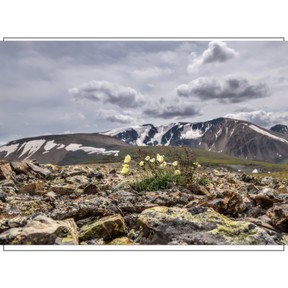
Tundra Plant Adaptations
I can explain how the adaptations in tundra plants help them survive.



8,000 schools use Gynzy
92,000 teachers use Gynzy
1,600,000 students use Gynzy
General
Scientists can learn about the adaptations of living things to better understand how the world around them works and to use and apply this knowledge to other experiences including problem-solving. Students will learn about adaptations, the tundra biome, some examples of tundra plants, and the adaptations present in those tundra plants. Students will participate in various activities to learn and practice naming and describing the adaptations of the plants and how they help them to survive. This lesson also includes a printable worksheet.
Standards
4-LS1-1
Learning Objective
Students will be able to explain how the adaptations in tundra plants help them survive.
Introduction
Have students participate in an activity where they first will be given a scenario, and then will be prompted to turn and talk to a partner where they describe the location with as much detail as possible. Afterward, explain to students what the tundra biome is like and how it relates to the place they just described. Tell students how in the tundra, there are plants that live there that have special adaptations that help them to live in a place with such harsh weather. Inform students that their goal for today is to learn about tundra plants and their adaptations.
Instruction
Teach students about adaptations. Explain that plants have adaptations in order to be able to obtain more nutrients and resources and for protection. Teach students about the tundra biome. Then, explain to students that they will learn about some common plant adaptations present in tundra plants that help them to survive in the biome’s unique climate. Teach students about the following plant adaptations: small, clumped, and close to the ground, small and waxy leaves, hairy stems, and dark colors. Afterward, students can engage in the following activities:
First, students will design and draw a home for a fictional fox character that includes tundra plants. Next, students will drag and label various tundra plant pictures, and then explain the adaptation in the plants they labeled. Finally, students will get to create a snowglobe that mimics a tundra environment that will include tundra plants. Students will write a short paragraph explaining their snow globe environment including its plants and their adaptations. A worksheet will be included for this final activity.
Quiz
Students respond to ten questions about adaptations in plants, the characteristics of the tundra and its plants, and adaptations in specific tundra plants that they learned about in this lesson. The question types include multiple choice, fill-in-the-blank, and sorting.
Closing
Students will get to create a snowglobe that mimics a tundra environment that will include tundra plants. Students will write a short paragraph explaining their snow globe environment including its plants and their adaptations. A worksheet will be included for this final activity.
Instruction materials
This lesson includes a printable worksheet.
The online teaching platform for interactive whiteboards and displays in schools
Save time building lessons
Manage the classroom more efficiently
Increase student engagement
Discover more!
About Gynzy
Gynzy is an online teaching platform for interactive whiteboards and displays in schools.
With a focus on elementary education, Gynzy’s Whiteboard, digital tools, and activities make it easy for teachers to save time building lessons, increase student engagement, and make classroom management more efficient.



